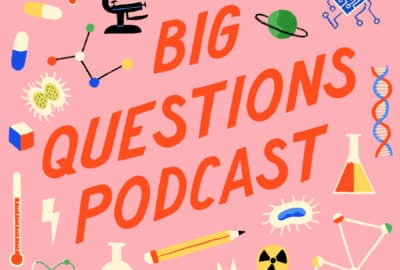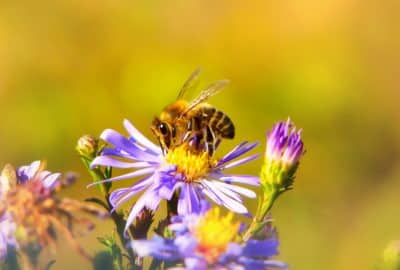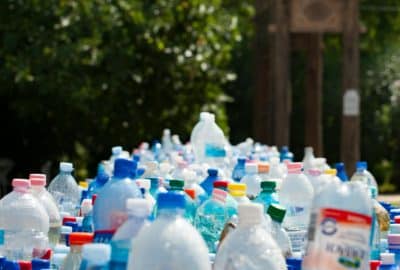How are seals affecting fishing catches?
Wednesday 8th May 2024, 12.30pm
Are seals the fishermen’s friends or foes? The UK is home 35% of the world’s grey seals and we know they like to get their flippers on many of the same fish as we do. So, how are seals impacting the fishing industry?
In our latest podcast, Dr Claire Tanner from the Department of Biology explores the unseen conflict beneath the waves and the complex dynamics between these marine mammals and fisheries.
Tune in to find out how understanding more about the behaviour of the UK’s seal populations can shape marine management policies.
Emily Elias: When it comes to seals living around the UK, there are some scientific blind spots. Anecdotally, we know stuff like, they like to eat the same fish that we do. But we don’t know a lot about how they go about finding their next meal. Well, that’s until now.
On this episode of the Oxford Sparks Big Questions podcast we’re asking “how are seals affecting fishing catches?”
Hello, I’m Emily Elias and this is the show where we seek out the brightest minds at the University of Oxford and we ask them the big questions. And for this one, we have found a researcher who is excellent at counting and hungry for some data sets.
Claire Tanner: So, I’m Claire Tanner. I’m a postdoc in the Marine Conservation Ecology and Management Group in the Department of Biology at the University of Oxford, and I study the human wildlife interactions between seals and fisheries, linked to animal behaviour.
Emily: Okay, so maybe I just have this, like, weird thing where I didn’t think there were tonnes of seals around in the UK. Are there, like, how many are we talking about?
Claire: Yes. So in the UK, we’ve got two species of seals. We have harbour seals and grey seals. The grey seals are the most numerous and the population is increasing at the moment, but it was previously declining from hunting, which is now illegal.
Harbour seal population is generally stable, although we’ve got some sub populations, some groups that are declining. But it’s the greys that are increasing.
At the moment, we’ve got 35% of the world’s population of grey seals and for harbour seals, we’ve got 22% of the world’s population in northern Europe (so not just in the UK). So that’s still quite a lot of seals and compared to other countries, we have a lot of seals. But we don’t know what the historic population counts were before hunting, so it’s difficult to say if we’re back up to that population size, but it’s really good that the populations are increasing after the hunting ban. So, yeah, that is a lot of seals.
Emily: And what are these seals doing?
Claire: A lot of the time they’re in the water. They hunt in the water and move quite a lot between sites. But they also haul out. So, they spend a lot of time resting to digest their food and also to reproduce, so we have quite a lot of sites around the UK that are reproductive sites.
Emily: And with all of these seals hanging about and resting, they must have some pretty full bellies. So where are they getting their food from?
Claire: Yeah, so there’s quite a bit of human wildlife interactions with this. So, they’re a generalist predator, so they eat basically anything that they can get their hands on or their flippers on. There have been some diet studies to say that they prefer sand eels and fish like that when they’re actually fishing for themselves. But there’s a lot of anecdotal evidence from fishers that they hang around the nets, take fish from the nets and will follow fishers around.
Emily: And obviously those fish would be the ones that have the high value for them to sell onto the markets, people wanting to eat bass and cod and all those wonderful things that we put in a deep fat fryer.
Claire: Yes, yes, exactly. So seals are tending to want the same fish that we’re wanting, which is where the conflict is arising from, really. The fishers have been saying that they follow the fishing boats from the harbour all the way to the fishing ground and then back again.
Emily: Why would they do that?
Claire: Potentially to get an easy meal. If you’ve got nets in the water, then the seals won’t have to dive down as far to get their fish, they won’t have to follow them or chase the fish to catch them.
Emily: You’ve used the words anecdotally. You’ve potentially. It seems like there’s a couple question marks about what we actually know and what we don’t know. What are the sort of gaps of knowledge that we have?
Claire: Yes. So, there was a paper recently in preprint from Jackson et al, and they were doing a big meta analysis on the severity of these seal-fisher interactions around the world and the conflicts that had arisen from this. So they predicted that the UK would have this really high potential for seal fisheries conflict, but we didn’t have a data point for the commercial fisheries. All the previous research in the UK has focused on recreational fishers, so anglers, or fish farms.
So, a lot of what we knew before I started this study was all anecdotal, people saying they are having interactions, but there wasn’t any empirical evidence or data points to say, this is definitely happening and this is the severity of it.
Emily: And so what have you done?
Claire: For the past year, I’ve been looking at the partially eaten fish that come out of the nets and I’ve been going around the UK talking to fishers and collecting data on the amounts of partially eaten catch they get compared to their total catch, their damage to gear and other information from the vessel, such as, like the target fish species or the gear type.
Emily: What are you hoping to piece together?
Claire: So, we’re hoping to link this back to the severity and try and get an extent of the conflict. So is it UK wide? Is it specific to certain areas? And also the severity. So are there certain types of gear that have more severe partially eaten catch? Are there certain fish species that fishers are catching that are worse than others for this partially eat and catch, and then potentially looking at more mitigation measures and helping policy decision makers with some management strategies.
Emily: So is this a big issue for people who are fishing?
Claire: Yeah, so a lot of the fishers that we’re talking to are small scale fisheries. So they’re under ten metre boats. They don’t fish very far from the shore, and they tend to be individuals or families in fishing communities that have been fishing for generations. So they’re not big corporate companies, they’re families and family owned businesses. They can be quite hard hit, depending on the gear and the fish that they’re targeting.
So we’ve had a range from no fish lost to almost 100% lost. So, like, like 90% of the fish that they’re pulling up in the nets have been lost.
Emily: Wow, that’s a lot of fish.
Claire: Yeah. So that’s quite a lot of the fish that they’re losing, but also they can’t do anything with the damaged catch. So if there’s a bite taken out of it, it’s not sellable or usable for anything other than bait for more fishing.
Emily: And so what were the preliminary results?
Claire: So we have shared the preliminary results with the MMO, who have then shared them with fishers. So at the moment, the extent of the seal fishes interactions is UK wide. So there’s very few places and people that are unaffected, and the amount of catch that’s partially eaten is affected by both the gear type that the fishers are using and the target fish that they’re trying to fish.
So if you’re fishing with the netting, then it’s more heavily depredated, there’s more partially eaten catch than any other gear types, and the seals also prefer the higher value fish. So fish like bass and monkfish were more eaten than other species, and shellfish and crustaceans were rarely targeted at all by seals. So there’s quite a difference between fishers depending on their gear and their target species.
Emily: So they’re figuring out what these seals are doing. How would that be able to help?
Claire: So we’ve collected this data to produce results on the extent and severity of this partially eaten catch – the depredation. We’ve recently received an Oxford Policy Engagement Network funding, and this is in collaboration with the Marine Management Organisation who are the policymakers.
So we’re going to be running management strategies workshops around the UK. And for this we can look into the factors within management strategies that are feasible and appealing to both fishers and also feasible from a policy side to assist the MMO with policymaking decisions. So hopefully we can help reduce that human wildlife conflict.
Emily: And, like, what would that kind of look like? Oh, this type of fishing gear is better to buy because it means that seals have a harder time getting into it or what?
Claire: Yeah, so they’re looking at… the MMO have been looking at acoustic deterrents, potential changes of gear types, changes in different target fish species. So it’s a range of different factors within the management strategies that they’re looking into. And then, we’re hoping to help to categorise these to best to worst for appealing for the fishes so that the MMO can find a management strategy that’s helpful for fishers as well as seals.
Emily: Yeah, I mean, the seals themselves. It sounds like you also want to learn about them, right?
Claire: Yes. So we also do population data on the seals. So we’d be monitoring the Isles of Scilly and the Farn Isles for full population counts of inaccessible islands. So we were in the civvies this past year and we’ve been flying drones from the boats to get an accurate count of seals from the air because you can’t see these sites from the boat, it’s really difficult. And some of the seals can be in the centre of the island and to get to the centre you have to be able to land on some of these really inaccessible islands and potentially disturb a load of seals to get to the centre. So we’ve been trying to use drones to fill in these population gaps and to monitor them more effectively.
There are some areas which are very well monitored, especially by conservation organisations and volunteers. But the fishers have brought up some locations that were not known as haul out sites and these are inaccessible by land and, like, not visible at all from land surveys. So potentially there are, extra populations that we don’t know about that would be useful to also monitor by drones.
Emily: That’s wild, that there’s just all these seals hanging around and we don’t even know how many there are.
Claire: Yeah. So we’ve got some estimates which have been made by groups up in St Andrews, but obviously we don’t know exactly how many there are because most of them do spend the majority of their time in the water. So when they come on land, we’re just getting a snapshot of their life.
Emily: Did you think that your life was going to take this twist and turn, that you’d be, counting seals all day?
Claire: So my background’s from animal behaviour as well as from, I’ve done some fisheries bycatch work as well. So it’s kind of a mix of my two backgrounds together and I just find the animal behaviour very interesting. And also working in the UK, I normally do field work abroad, so being able to have a project in the UK and learn more about the coast of where I live has been really, really good as well. And to be able to talk to fishers and give them a voice and put a data point where the anecdotal evidence is, is really rewarding as well. To be able to get some actual input and to help a policy decision maker to move forward with some actual action is quite rewarding.
Emily: Oh, I bet your phone is just filled with really cute seal pictures.
Claire: I try, but my phone camera isn’t that good.
Emily: This podcast was brought to you by Oxford Sparks from the University of Oxford with music by John Lyons and a special thanks to Dr Claire Tanner.
Tell us what you think about this podcast. You can rate and review us on whatever app you are using or you can find us on the internet @OxfordSparks. We’ve got a website, oxfordsparks.ox.ac.uk and get in touch with your big questions.
I’m Emily Elias. Bye for now.





